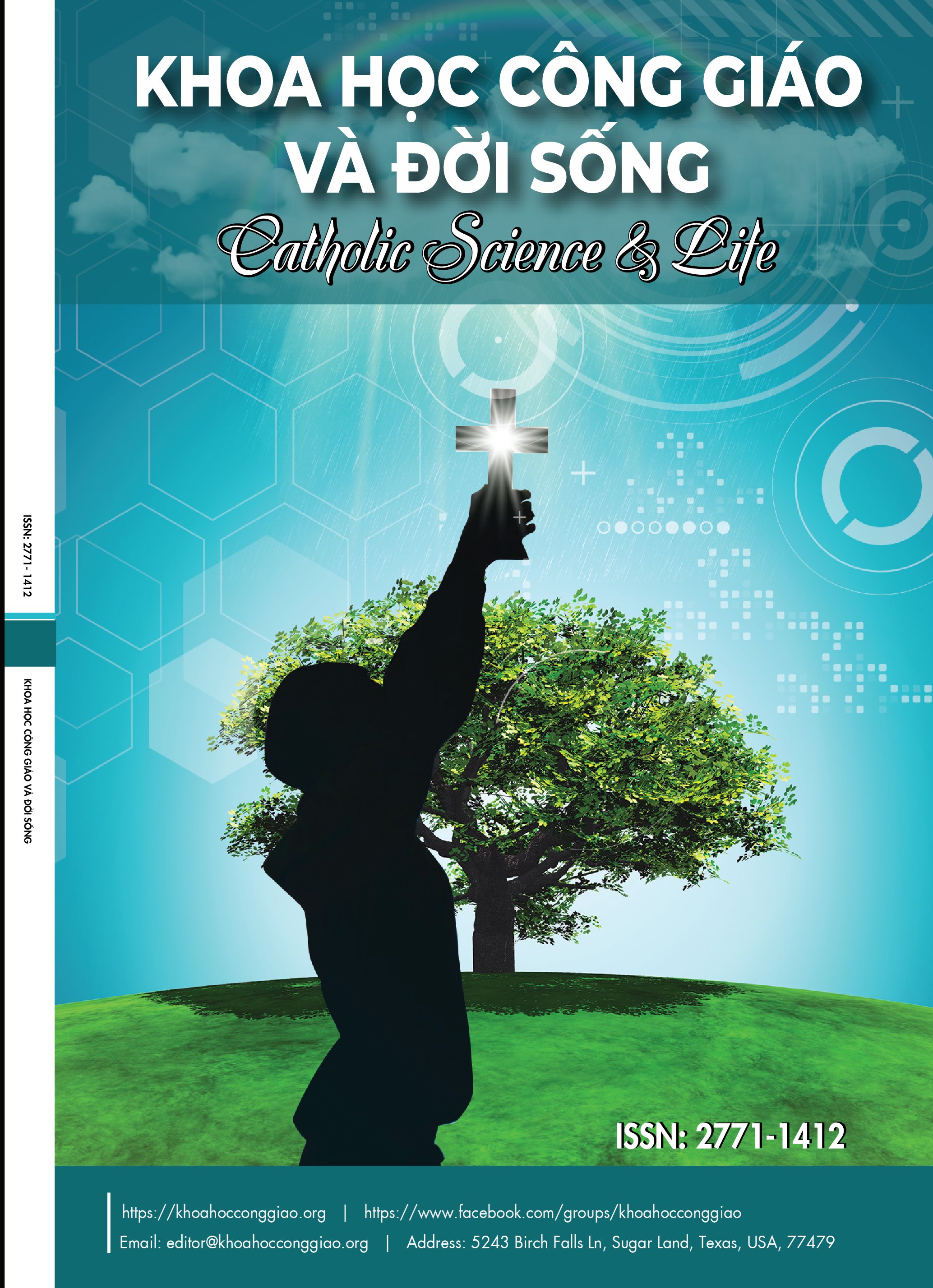Tai Ương Thứ Tư - Thiên Chúa Cho Ruồi Nhặng Ập Xuống Đất Ai Cập: Phân Tích Đoạn Xh 8,16-28
The Fourth Plague - God Sends Swarms of Flies on Egypt's Land: Analyzing the Passage Exodus 8:16-28
DOI:
https://doi.org/10.54855/csl.23329Từ khóa:
Tai ương, ruồi nhặng, giải thoát, Ai Cập, cầu nguyệnTóm tắt
Trong bài nghiên cứu này, người viết sẽ đi vào tìm hiểu trích đoạn Xh 8,16-28, tai ương thứ tư: Ruồi nhặng. Bản văn không chỉ cho thấy Thiên Chúa thực hiện các dấu lạ để giải thoát con cái Ngài khỏi cảnh nô lệ, nhưng còn cho thấy sức mạnh của lời cầu nguyện phát xuất từ những ai tin theo và trông cậy vào Thiên Chúa. Đồng thời, bản văn diễn tả sự trung tín và kiên nhẫn của Thiên Chúa trước những bất tín của con người.
Abstract
In this study, the writer will delve into the passage Exodus 8:16-28, the fourth plague: Flies. The text not only demonstrates God's performance of miraculous signs to liberate His people from slavery but also showcases the power of prayer emanating from those who believe in and rely on God. Additionally, the text portrays God's faithfulness and patience in the face of human disobedience.
Tài liệu tham khảo
Durham I. John (1987). Word Biblical Commentary – Exodus, 115. ISBN: 978-0849902024. Thomas Nelson Inc
Farid Atiya, Ancient Egypt – Standard Edition (Egypt: Giza, Farid Atiya Press, 2006), 20-21. Thomas L. Constable, Notes on Exodus (Ebook, 2022 Edition), 76. https://planobiblechapel.org/tcon/notes/pdf/exodus.pdf
Garland, The Expositor’s Bible Commentary, 432. Durham, Word Biblical Commentary – Exodus, 114.
Jean-Louis Ska (2006). Introduction to Reading the Pentateuch. Indiana: Eisenbrauns.
Walter C.Kaiser JR. X. David E. Garland, The Expositor’s Bible Commentary: Genesis – Leviticus (Michigan: Grand Rapids, 2009), 367.
Tải xuống
Đã Xuất bản
Số
Chuyên mục
Giấy phép
Bản quyền (c) 2023 Matthew Huỳnh Minh Thiện, S.J.

Tác phẩm này được cấp phép theo Giấy phép quốc tế Creative Commons Attribution-NonCommercial 4.0 .
Authors retain copyright and grant the journal the right of first publication with the work simultaneously licensed under a Creative Commons Attribution 4.0 International License that allows others to share the work with an acknowledgment of the work's authorship and initial publication in this journal.
Authors are able to enter into separate, additional contractual arrangements for the non-exclusive distribution of the journal's published version of the work (e.g., post it to an institutional repository, in a journal or publish it in a book), with an acknowledgment of its initial publication in this journal.













